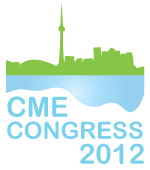Stuart Haines (University of Maryland School of Pharmacy); Kristi Hofer (ASHP Advantage); Catherine Klein (ASHP Advantage); Julie Webb (ASHP Advantage)
Synopsis
This educational activity will describe a model for a comprehensive quality improvement inter-professional education intervention that can be applied to many disease states or wellness programs. Factors to consider in selecting institutions for participation in the intervention will also be reviewed. A system of follow through and accountability that addresses barriers to practice change and how to design educational interventions that employ the model will be explained.
Purpose
The purpose of this educational activity is to describe an intervention that is built on best practices in quality improvement and inter-professional collaboration to achieve practice changes that can be applied to many disease states.
Format
Didactic presentation.
Presenter Perspectives
Presenters will (1) review the educational interventions and how they adhere to best practices in adult learning, (2) explain how to develop a system of follow through and accountability, and (3) describe how to achieve quality improvements that are sustainable and measurable.
Significance to CME and Participants
This comprehensive quality improvement educational intervention, which employs live education and distance learning, begins with an application process where applicants assemble an inter-professional team consisting of physicians, pharmacists, nurse practitioners, nurses, and case managers. Applicants describe their institution-specific goals to address a disease state. A set number of institutions are selected for participation. Participants collect baseline data in advance of an all-day face-to-face visit by an expert inter-professional team (pharmacist and physician), which also provides ongoing mentoring. During the face-to-face meeting, the faculty mentors evaluate the institution on its practices toward a particular disease state or wellness program (e.g., VTE prevention, antimicrobial stewardship) and develop a plan to achieve institution-specific quality improvement goals. A customized institutional visit report with recommendations is prepared by the expert team, and the participating institutions collect institution-specific outcomes data. Data regarding the impact of the educational intervention is then assessed before and six months after the intervention to determine whether improvements were achieved.
Funding Sources
The activities to be presented in this program were funded by educational grants from Ortho-McNeil, Division of Ortho-McNeil-Janssen Pharmaceuticals, Inc., Pfizer Inc., Astellas Pharma Global Development, Inc., and Cubist Pharmaceuticals.
Declarations
The presenters have no conflicts of interest to disclose.





